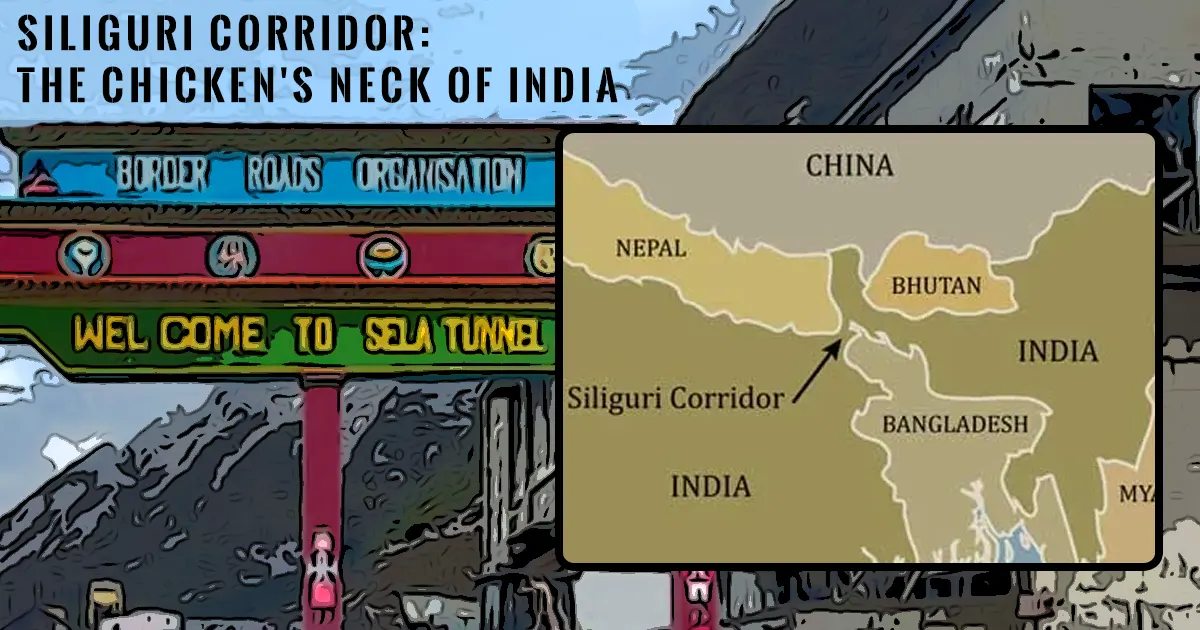GS3: INTERNAL SECURITY:

The Siliguri Corridor, often referred to as the “Chicken’s Neck,” is a strategically vital strip of land in the northeastern part of India. It connects mainland India to the northeastern states and is flanked by Nepal, Bhutan, and Bangladesh.
Geographical Significance
- Location: Situated in the Darjeeling district of West Bengal.
- Dimensions: Approximately 22 kilometers wide at its narrowest point.
- Borders:
- North: Bhutan.
- South: Bangladesh.
- West: Nepal.
- East: Northeastern Indian states (Sikkim, Assam, Arunachal Pradesh, etc.).
Strategic Importance
- Link to Northeast India:
- The corridor is the only land route connecting the seven northeastern states with the rest of India.
- Ensures the movement of goods, military, and civilians.
- Defense and Security:
- A crucial area for national security due to its proximity to international borders.
- Vulnerable to blockades or military threats from neighboring countries during conflicts.
- Economic Significance:
- Facilitates trade with Bhutan, Nepal, and Bangladesh.
- Acts as a gateway for India’s Act East Policy, enhancing connectivity with Southeast Asia.
- Connectivity to Sikkim and the Himalayas:
- Provides access to Gangtok, Nathu La Pass, and other strategic locations in the Himalayas.
Challenges
- Geopolitical Vulnerability:
- Its narrow width makes it susceptible to encirclement or disruption during conflicts.
- Increasing Chinese activities in the region, especially in Doklam, add to strategic concerns.
- Smuggling and Illegal Activities:
- The porous borders contribute to issues like human trafficking, smuggling of goods, and illegal migration.
- Natural Hazards:
- Prone to landslides, floods, and other natural disasters, disrupting connectivity.
- Infrastructure Constraints:
- Limited road and rail networks make the region vulnerable to isolation.
Government Initiatives to Strengthen the Corridor
- Infrastructure Development:
- Ongoing projects to enhance rail and road connectivity, including the New Jalpaiguri station as a hub.
- Development of highways like the Asian Highway 2.
- Border Management:
- Strengthening border security with advanced surveillance systems.
- Coordinating with Bhutan, Nepal, and Bangladesh for border cooperation.
- Act East Policy:
- Promoting economic and infrastructural ties with Southeast Asia.
- Military Preparedness:
- Deployment of additional troops and advanced military installations in the region.
The Siliguri Corridor is a lifeline for India’s northeastern states and holds immense strategic, economic, and cultural importance. Strengthening infrastructure, border security, and regional cooperation are essential to safeguarding this critical region from external and internal challenges.




